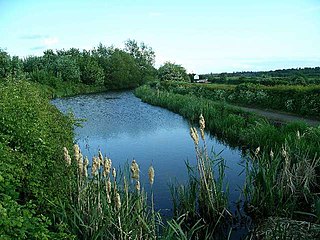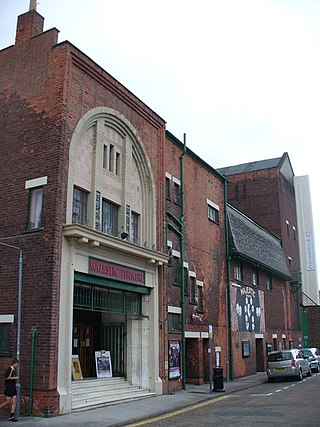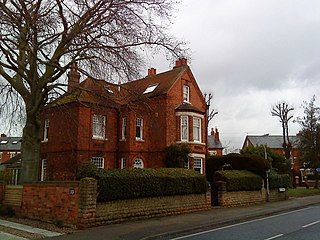
Beeston is a town in the Borough of Broxtowe, Nottinghamshire, England, it is 3 miles south-west of Nottingham. To its north-east is the University of Nottingham's main campus, University Park. The headquarters of pharmaceutical and retail chemist group Boots are 0.6 miles (1 km) east of the centre of Beeston, on the border with Broxtowe and the City of Nottingham. To the south lie the River Trent and the village of Attenborough, with extensive wetlands.

The Nottingham Canal is a canal in the English counties of Nottinghamshire and Derbyshire. As built, it comprised a 14.7-mile (23.7 km) long main line between the River Trent just downstream of Trent Bridge in Nottingham and Langley Mill in Derbyshire. At the same time as the main line of the canal was built by its proprietors, the separate Trent Navigation Company built the Beeston Cut, from the main line at Lenton in Nottingham to rejoin the River Trent upstream of Nottingham, thus bypassing the difficult section of navigation through Trent Bridge. The section of the main line between Trent Bridge and Lenton, together with the Beeston Cut, is still in use, forming part of the navigation of the River Trent and sometimes referred to as the Nottingham & Beeston Canal. The remainder of the main line of the canal beyond Lenton has been abandoned and partially filled.

Watson Fothergill was a British architect who designed over 100 unique buildings in Nottingham in the East Midlands of England. His influences were mainly from the Gothic Revival and Old English vernacular architecture styles.
Beeston was an urban district in Nottinghamshire, England, from 1894 to 1935.
Emmanuel Church, Nottingham was a Church of England church in Nottingham on Woodborough Road between 1883 and 1972.

Captain Gilbert Smith Doughty CE was an architect based in Nottingham and Matlock.

Robert Charles Clarke was an architect based in Nottingham.

Abraham Harrison Goodall LRIBA was a British architect based in Nottingham.

Alfred John Thraves FRIBA was an architect based in Nottingham who specialised in cinema design.

Ernest Reginald Ridgway was an English architect based in Long Eaton.

Arnold Plackett LRIBA was an 20th century architect based in Long Eaton.

James Huckerby was a 19th-century builder and architect based in Beeston, Nottingham.

John Frederick Dodd LRIBA was an architect based in Long Eaton, Derbyshire.

John Bowley LRIBA was an architect and engineer based in England who worked mainly in Beeston, Nottinghamshire and Hastings.

Alexander Wilson LRIBA was an architect based in Nottingham. Some of his most significant work include the 900 houses built on the Beeston Rylands estate in the late 1930s.

Captain Albert Edgar Eberlin FRIBA MC was an architect based in Nottingham.

Wollaton Road Methodist Church, Beeston was a Methodist church on Wollaton Road, Beeston, Nottinghamshire from 1853 until 2014.

Wollaton Road, Beeston runs north from its junction with High Road, Beeston to Derby Road.

Lieut-Colonel Herbert Walker FRIBA, M Inst CE, FSI, was an architect, surveyor and civil engineer based in Nottingham from 1870 to 1923.

The Nottingham Corporation Electricity Department was responsible for the production and supply of electricity in Nottingham, England, from 1894 to 1948.



















